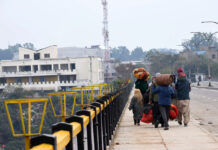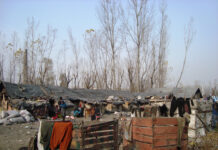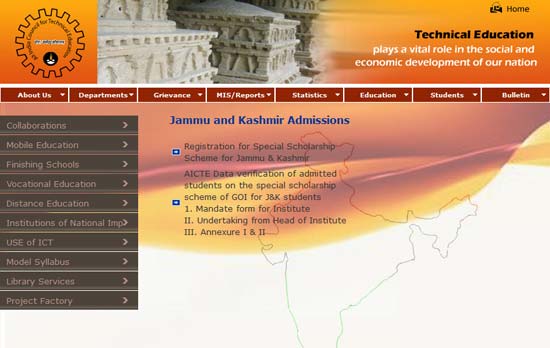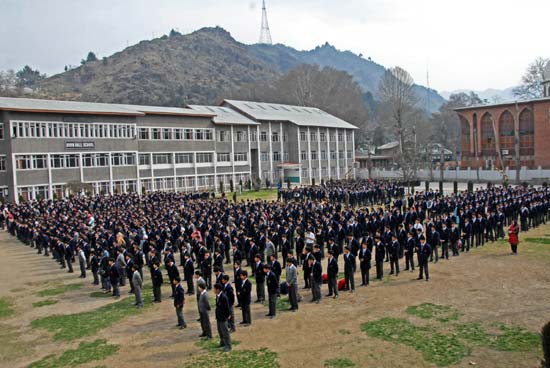Under pressure to weed out old, diseased vehicles, the transporters got respite from the Court. With the breathing period granted done and dusted with, it remains to be seen how concerned the authorities are to curb pollution in Kashmir’s summer capital. For now the vehicles are up and running, reports Bilal Handoo
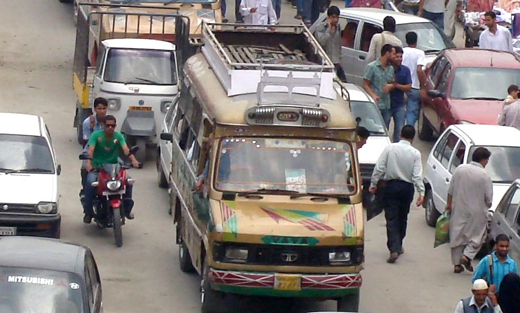 The summer capital of the state is still witnessing the mobility of old and worn out vehicles, especially outdated Mini-buses against the High Court directives. The legal decree which came forth in November 2005 clearly states weeding out of such vehicles from the road scenes. A division bench of the High Court had called for the vehicles to be phased out, plying for more than 15 years on state roads while acting on a Public Interest Litigation (PIL).
The summer capital of the state is still witnessing the mobility of old and worn out vehicles, especially outdated Mini-buses against the High Court directives. The legal decree which came forth in November 2005 clearly states weeding out of such vehicles from the road scenes. A division bench of the High Court had called for the vehicles to be phased out, plying for more than 15 years on state roads while acting on a Public Interest Litigation (PIL).
The court had ordered, “All the commercial vehicles, which are more than fifteen years old (as per the date of initial registration) shall be replaced under section 83 of the Motor Vehicles Act, 1988 and Rule 96 of State Motor Vehicles Rule, 1991, framed there under.”
Soon after this judicial verdict, bulk of the Kashmir Motor Drivers Association (KMDA) fleet was reduced to 330 from 1000 buses. The Western Bus services (WBS) fleet which is three times larger than KMDA and services north Kashmir got also condensed. But results on the ground reveal partial implementation of the said order.
Be it Nallamar road in downtown or elsewhere in Srinagar, these vehicles have a free run. “Not only such vehicles are unfit for traveling, but they are major source of pollution for already polluted Srinagar city,” says Shafqat Khan, a government employee from Srinagar. Khan says he is puzzled by “inaction” approach adopted by authorities in this matter.
In response to the court verdict in 2011, then chief secretary of the state, Madhav Lal had decided to enforce compulsory fitness test on the vehicles over 15 years old. He observed that plying of unfit and old vehicles constitutes one of the major risks for road mishaps.
Then the Transport Commissioner issued a notification to all the associations and unions concerned—so as, to examine the issue and prepare a program to phase out all such vehicles.
According to the notification, all commercial vehicles of more than 15 years of age would be allowed to ply on roads for a period of six months from May 21, 2011 provided they hold fitness and pollution under control (PUC) certificates.
It was also noted that commercial vehicles about 25 years or more will cease to ply on the roads of Jammu and Kashmir within a period of three weeks from the date of issue of the directions.
Three years after the notification was floated, Srinagar is still witnessing mobility of ‘diseased’ vehicles.
On environmental front, there are studies conducted by various agencies which stressed on an immediate weeding out of these vehicles. One such study was carried by the State Pollution Control Board (SPCB) in recent past, notes: “More than 55 per cent of Kashmir’s vehicles do not conform to pollution norms.”
The study further states that pollution caused by these diseased vehicles is the primary source of black carbon—that according to geo-scientists, causes three to four times greater warming effect in the atmosphere than prevailing estimates.
Prof AR Yousuf, former head of Environmental Studies Kashmir University terms these worn out vehicles ‘gangrene’ for the ailing environmental belt of Srinagar city. “It is quite natural, old vehicle consumes more fuel which itself adds more pollution into the air,” says Prof Yousuf.
He says that these vehicles continuously add pollutants like carbon monoxide, particulate matters, sulphur and nitrogen oxides and thereby seriously violates Euro Emission norms, “one cannot expect a vehicle as old as 15 to 25 years to oblige international pollution norms like Euro Emissions.”
European Emission norms define the acceptable limits for exhaust emissions of new vehicles. Currently, emissions nitrogen oxides (NO), total hydrocarbon (THC), non-methane hydrocarbons (NMHC), carbon monoxide (CO) and particulate matter (PM) are regulated for most vehicle types. For each vehicle type, different standards apply. Non-compliant vehicles cannot be sold as per these norms.
According to the report by SPCB, about 51.60 percent of vehicles x-checked in Srinagar were witnessed as non-conforming i.e., violating the prescribed emission norms.
And, most of these expired vehicles make use of adulterated fuel. SPCB has also pinpointed this menace in its report which says “adulterated fuel – kerosene mixed with diesel to make more profit – worsens the problem.” The usage of such fuel means adding further noxious substances into air.
The menace doesn’t assume rest there. These diseased vehicles also cause many health disorders. “Vehicular emissions from these polluted vehicles carry more than 100 organic compounds including aldehydes and benzopyrene aldehydes,” the SPCB report notes.
The study notes, these compounds are potent to cause eye disorders and respiratory problems like asthma, bronchitis etc, “these vehicles emit enormous quantity of SO2, lead fumes and carbon gases. If the concentration of lead exceeds the required limit, this causes mental retardation, high blood pressure and skin troubles. Children are more prone to these pollutants than the adults.”
Finding itself at centre of debate, Regional Transport Officer (RTO), Kashmir told Kashmir Life that the matter being sub-judice prevented the department to take a concrete action against the diseased vehicles. “The court had given 10 years time to these transporters to take their vehicles from roads which ended last year,” says Mohammad Anees RTO, Kashmir. “And soon after that, 83 diseased vehicles were weeded out from Srinagar. And at the end of 2014, another 432 such vehicles will be weeded out.”
If RTO (Kashmir) is to be believed, then Srinagar will get rid itself from these vehicles at the end of 2015. And till then, junk journey is on!


